The mesmerizing beauty of Betta fish, also known as Siamese Fighting Fish, has captivated aquarists for centuries. Their vibrant colors, flowing fins, and relatively simple care requirements make them a popular choice for beginners and experienced hobbyists alike.
For those seeking a captivating yet compact aquatic display, a nano Betta fish tank offers the perfect solution. This guide delves into everything you need to know about setting up a stunning and thriving nano tank specifically for your Betta fish.
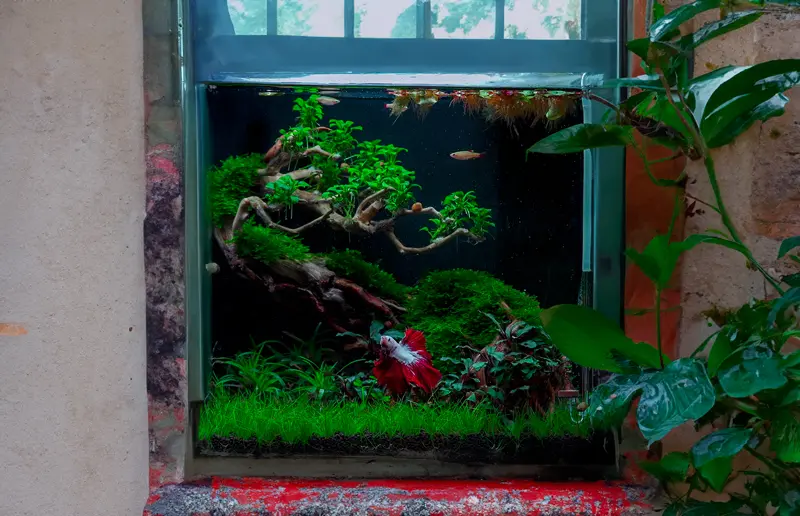
Understanding Nano Tanks: The Ideal Betta Abode
Nano tanks, typically ranging from 5 to 10 gallons, provide a manageable way to experience the joys of aquascaping without needing a large footprint. But why is a nano tank ideal for Betta fish?
- Space Requirements: Betta fish are naturally territorial and prefer smaller spaces. A nano tank provides them with enough room to swim freely without feeling overwhelmed. Overly large tanks can stress them out.
- Water Quality Management: Smaller water volumes are generally easier to maintain in terms of temperature, water chemistry, and filtration. This is crucial for the well-being of your Betta fish.
- Aesthetics & Versatility: Nano tanks allow you to create visually stunning aquascapes within limited space. You can explore various hardscape layouts and plant options to personalize your underwater world.
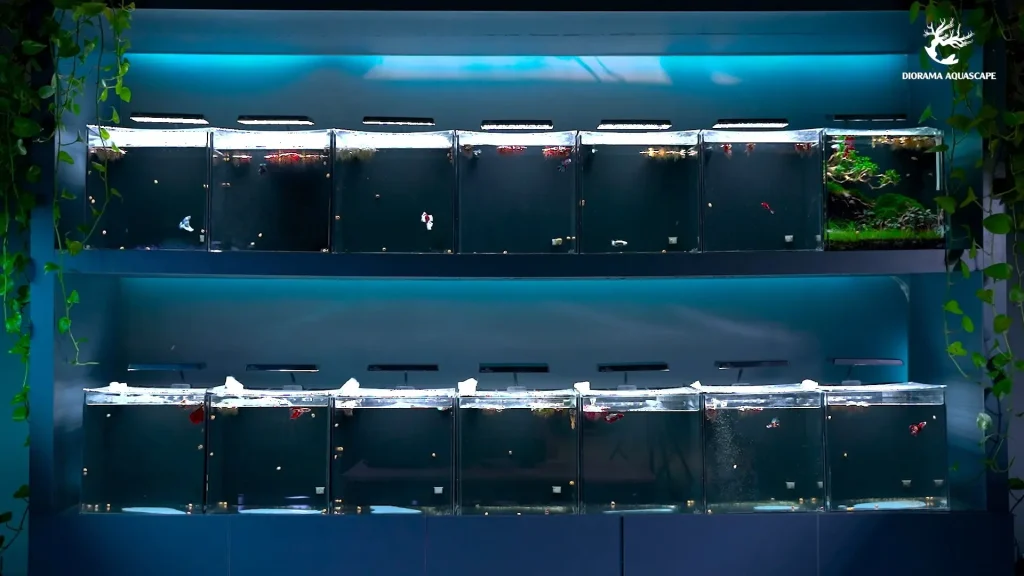
Essential Equipment for Your Nano Betta Tank:
Before embarking on your nano tank adventure, gather the necessary equipment to create a comfortable and healthy environment for your Betta fish:
- Nano Tank: Choose a tank with a minimum capacity of 5 gallons, preferably with a rectangular footprint to provide more horizontal swimming space.
- Aquarium Stand: A sturdy stand ensures safe housing for your filled tank. Consider the weight of the full setup when selecting a stand.
- Aquarium Filter: A reliable filter is essential for maintaining clean water and removing fish waste. Select a filter with adjustable flow, as Betta fish prefer gentle water currents.
- Aquarium Heater: Depending on your climate and desired water temperature for your Betta fish (ideally 78°F – 82°F), you might need a heater to maintain consistent warmth.
- Aquarium Lighting: Choose LED lighting designed for planted tanks or Betta fish specifically. These lights typically offer options for adjustable brightness and color temperature.
- Aquarium Substrate: Select a high-quality aquarium gravel or sand that is smooth and won’t damage your Betta’s delicate fins. Consider using a dark-colored substrate to enhance the vibrancy of your fish.
- Thermometer: A reliable thermometer is crucial for monitoring your tank’s water temperature and ensuring optimal conditions for your Betta fish.
- Decorations: Choose smooth and Betta-safe decorations to provide hiding spots and enhance the visual appeal of your tank. Live plants can also be a great option, but ensure they are suitable for nano tanks with low light levels.
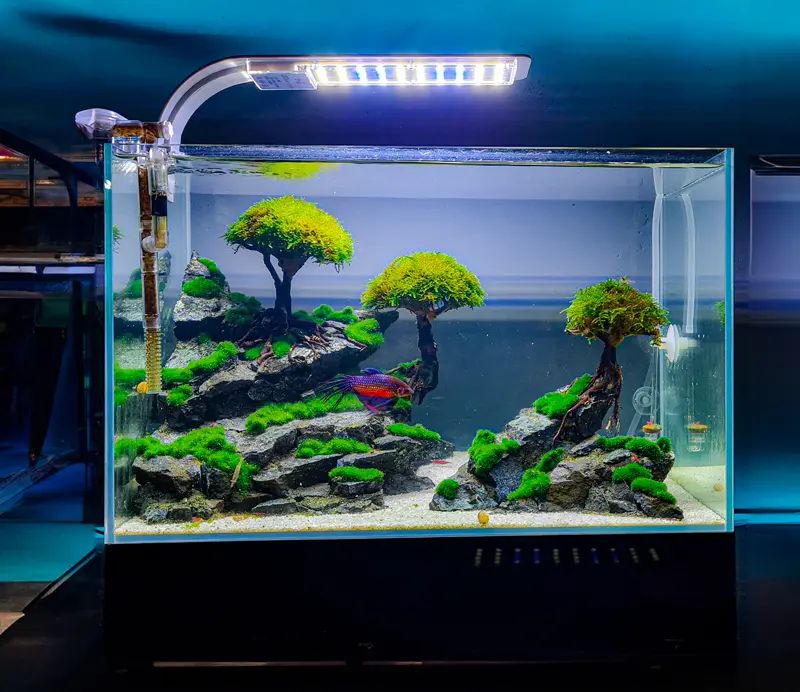
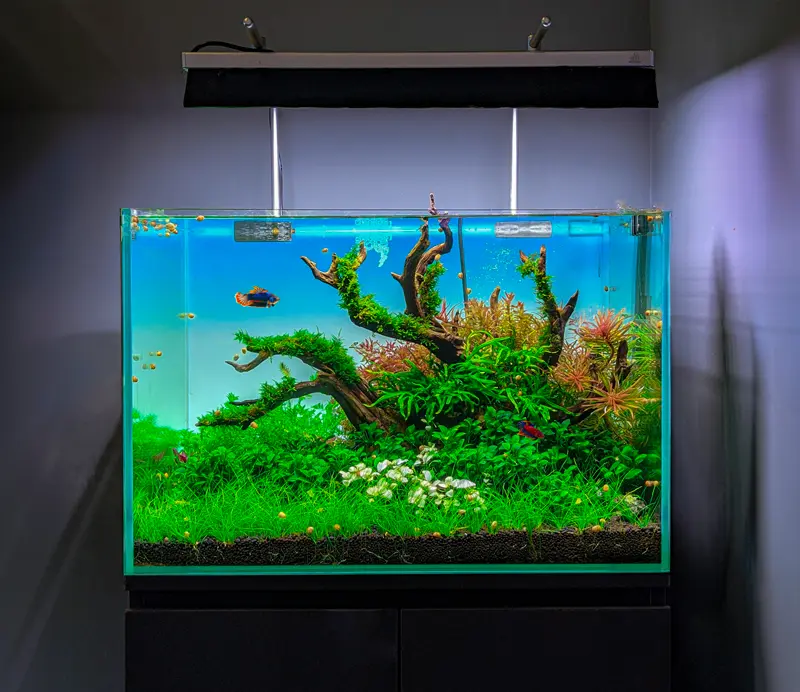
Setting Up Your Nano Betta Tank: Step-by-Step Guide
- Cleanse and Prepare: Thoroughly clean your aquarium with a solution of water and vinegar. Rinse it well and ensure it’s completely dry before proceeding.
- Assemble the Stand and Filter: Assemble your aquarium stand according to the manufacturer’s instructions. Set up your filter following the instructions, ensuring proper placement and water flow direction.
- Substrate Time: Add your chosen aquarium substrate to the tank, following the recommended depth. Gently rinse the substrate beforehand to remove any dust or debris.
- Hardscape & Decorations: Carefully arrange your chosen hardscape elements or decorations. Avoid overcrowding the tank and ensure they leave ample swimming space for your Betta.
- Planting (Optional): If you opt for live plants, select low-light varieties suitable for nano tanks. Plant them strategically, considering their size and light requirements.
- Fill with Dechlorinated Water: Slowly fill your tank with dechlorinated water. Use a plate or bowl to diffuse the water flow and prevent disturbing the substrate or newly planted vegetation.
- Equip and Adjust: Install your chosen filter and heater (if needed) according to the manufacturer’s instructions. Adjust the filter output for a gentle water flow suitable for Betta fish.
- Lighting Setup: Install your aquarium lighting and adjust the settings for a moderate brightness and a color temperature suited for planted tanks or Betta fish (typically a natural daylight spectrum).
- Water Chemistry & Cycling: Test your water parameters for pH, ammonia, nitrite, and nitrate. Perform a nitrogen cycle to establish healthy bacteria in your aquarium before adding your Betta fish. This process can take several weeks.
- Introducing Your Finned Friend: Once your aquarium has cycled, and water parameters are stable, you can finally welcome your Betta fish!
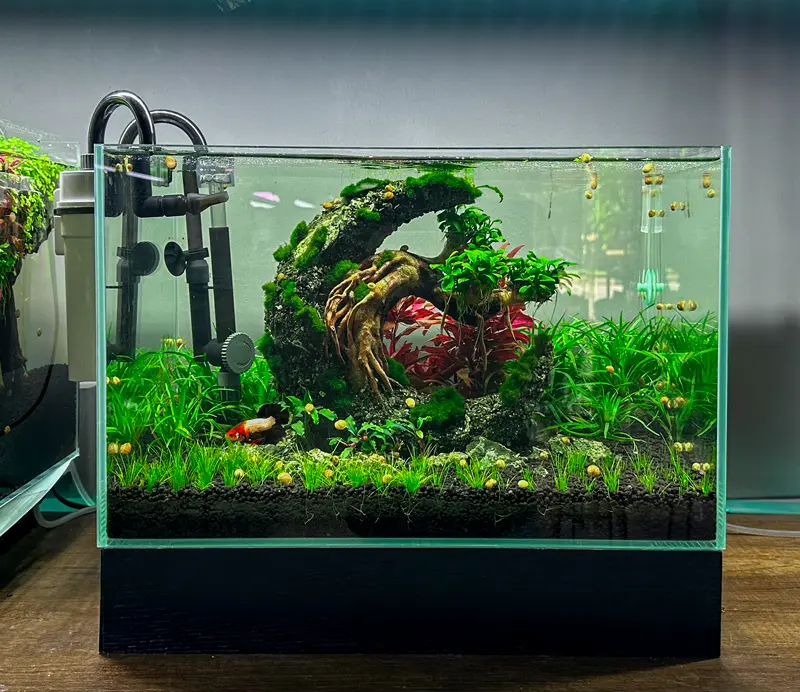

- Acclimatization: Perform a gradual acclimatization process to avoid stressing your fish. Float the unopened Betta bag in the tank for 15-20 minutes. Then, add tank water to the bag gradually over 30 minutes. Finally, gently net your Betta and release it into the tank.
- Monitoring & Maintenance: Regularly monitor your water parameters and maintain consistent water temperature. Perform weekly water changes (20-25%) to remove waste products and replenish essential minerals.
- Feeding: Betta fish are carnivores. Feed them high-quality Betta pellets or flakes two to three times a day, offering only what they can consume in two minutes to prevent overfeeding.
- Enjoy Your Creation! With a properly set-up nano tank, you can now enjoy the vibrant beauty and captivating personality of your Betta fish. Take some time to relax and appreciate the serenity of your miniature underwater world.
Bonus Tips for a Thriving Nano Betta Tank:
- Live Plants: While optional, live plants can significantly enhance the aesthetics and functionality of your nano tank. They provide hiding spots for your Betta, help maintain water quality by absorbing nutrients, and add a touch of natural beauty.
- Lid or Mesh Top: Consider using a lid or mesh top for your nano tank. Betta fish are known jumpers, and this will prevent them from escaping.
- Tank Mates (Optional): Betta fish can be territorial with their own kind. If you wish to add tank mates, choose peaceful community fish species suitable for nano tanks and known to co-exist with Betta fish. However, proceed with caution and monitor their interactions closely.
- Routine Maintenance: Maintain a consistent cleaning routine. This includes regular water changes, filter media cleaning, and wiping down the tank glass to remove algae buildup.
Conclusion: Your Miniature Oasis Awaits
By following these steps and incorporating the bonus tips, you can create a stunning and thriving nano tank specifically designed for your Betta fish. Remember, a well-maintained tank not only ensures the health and well-being of your fish but also allows you to experience the joys and serenity of aquascaping in a manageable space. With a little planning and ongoing care, your nano Betta tank will become a captivating focal point in your home, showcasing the mesmerizing beauty of these remarkable fish.

